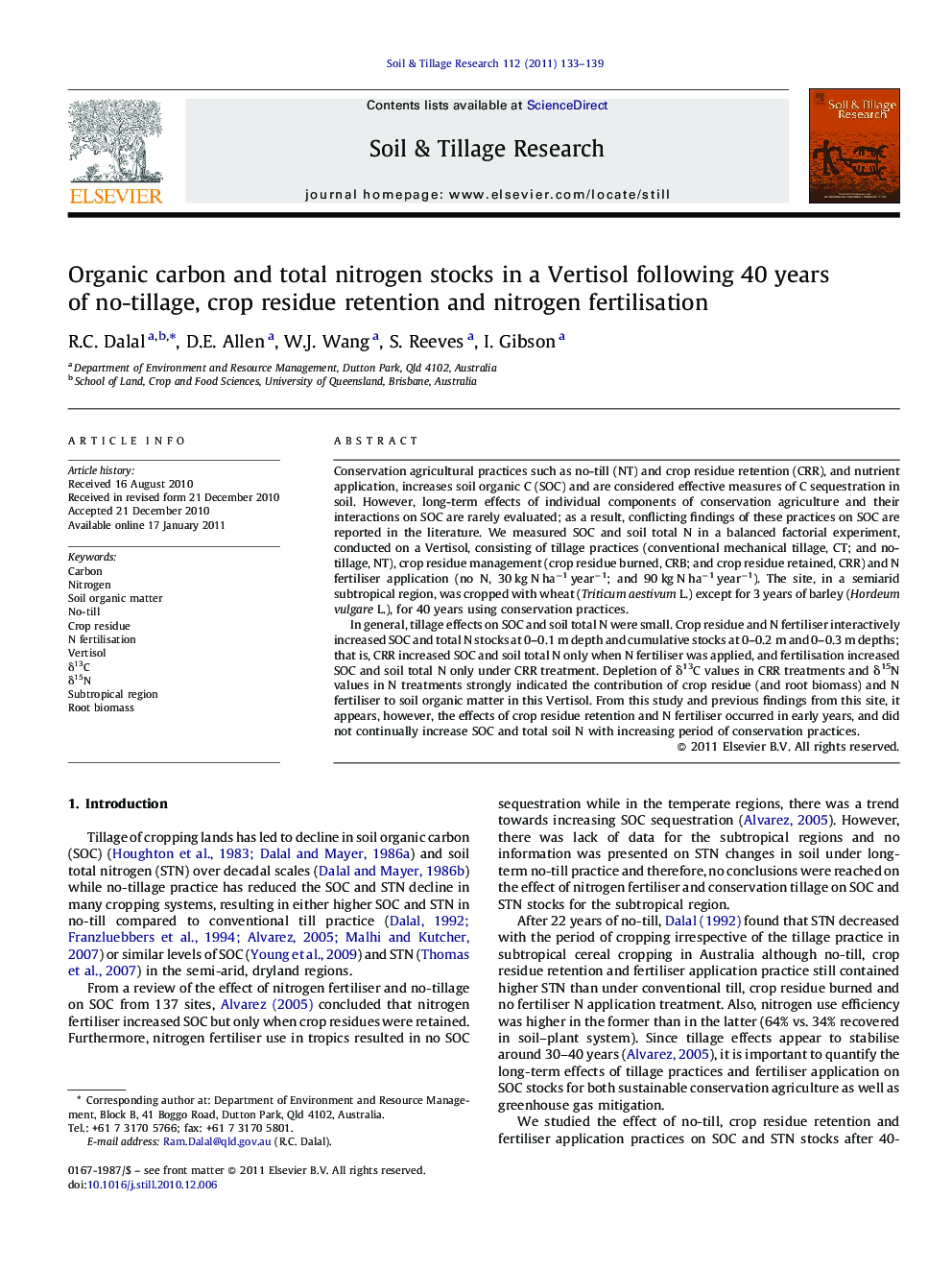| Article ID | Journal | Published Year | Pages | File Type |
|---|---|---|---|---|
| 306156 | Soil and Tillage Research | 2011 | 7 Pages |
Conservation agricultural practices such as no-till (NT) and crop residue retention (CRR), and nutrient application, increases soil organic C (SOC) and are considered effective measures of C sequestration in soil. However, long-term effects of individual components of conservation agriculture and their interactions on SOC are rarely evaluated; as a result, conflicting findings of these practices on SOC are reported in the literature. We measured SOC and soil total N in a balanced factorial experiment, conducted on a Vertisol, consisting of tillage practices (conventional mechanical tillage, CT; and no-tillage, NT), crop residue management (crop residue burned, CRB; and crop residue retained, CRR) and N fertiliser application (no N, 30 kg N ha−1 year−1; and 90 kg N ha−1 year−1). The site, in a semiarid subtropical region, was cropped with wheat (Triticum aestivum L.) except for 3 years of barley (Hordeum vulgare L.), for 40 years using conservation practices.In general, tillage effects on SOC and soil total N were small. Crop residue and N fertiliser interactively increased SOC and total N stocks at 0–0.1 m depth and cumulative stocks at 0–0.2 m and 0–0.3 m depths; that is, CRR increased SOC and soil total N only when N fertiliser was applied, and fertilisation increased SOC and soil total N only under CRR treatment. Depletion of δ13C values in CRR treatments and δ15N values in N treatments strongly indicated the contribution of crop residue (and root biomass) and N fertiliser to soil organic matter in this Vertisol. From this study and previous findings from this site, it appears, however, the effects of crop residue retention and N fertiliser occurred in early years, and did not continually increase SOC and total soil N with increasing period of conservation practices.
Research highlights▶ No-till and crop residue retention, and N application practised for 40 years. ▶ Tillage effects on soil organic carbon and total N were small. ▶ There was a significant crop residue × N interaction down to 0.3 m depth. ▶ Soil organic carbon and total N increased with residue only when N was applied. ▶ N increased soil organic carbon and total N only when crop residue was retained.
